Who Is at Fault in a Rear End Accident?
Many people assume that the driver of the rear vehicle is always at fault for a rear end accident. However, that is not the case. Whether you were the driver in front, the one behind, or even a third party, here’s what you need to know about liability in rear end accidents. If you find yourself in such a situation, seeking advice from a rear-end accident lawyer can help you navigate the legal complexities and ensure your rights are protected.
Request A Free Consultation Today!
When Is the Rear Driver at Fault for a Rear End Accident?
Establishing fault is a pivotal step after a rear end collision.
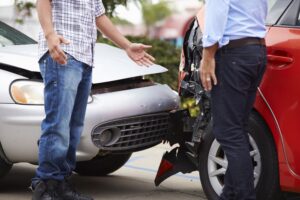
In many rear end accident cases, the rear driver bears responsibility due to one or more of the following contributing factors:
- Distracted Driving: When a driver’s attention strays from the road, whether due to texting or other distractions inside or outside the vehicle, their delayed reaction time can result in a rear end collision.
- Driving Under the Influence (DUI): Impairment from alcohol or drugs severely hampers a driver’s judgment and reflexes. If a rear driver is under the influence, their compromised ability to respond to traffic changes can result in devastating rear end collisions.
- Drowsy Driving: A drowsy driver is a danger on the road. Reduced vigilance and slower reaction times can prevent a rear driver from slowing or stopping in time to avoid rear end accidents.
- Speeding: Excessive speed reduces the available time a driver has to react to the traffic ahead. A rear driver traveling too fast might not decelerate in time to keep from crashing into the vehicle ahead.
- Tailgating: Following too closely, or tailgating, leaves insufficient stopping distance between vehicles. If the front car stops abruptly, the tailgating rear driver is often at fault for not maintaining a safe distance.
- Dependence on Smart Driving Systems: Over-reliance on automated driving aids gives some drivers a false sense of security. If a rear driver trusts too heavily in these systems and fails to intervene when necessary, you can hold them liable for avoidable collisions.
- Lack of Vehicle Maintenance: Neglecting regular vehicle maintenance, especially for brakes and tires, can impede a car’s ability to stop promptly. You can hold a rear driver with a vehicle in poor condition liable if preventable defects cause a rear end accident.
- Poor Road Conditions: While poor road conditions can contribute to an accident, the onus is on every driver to adjust their driving as necessary. You can hold a rear driver who fails to adapt their speed or following distance on a dangerous road responsible for a resulting rear end collision.
When Is the Leading Driver at Fault for a Rear End Accident?
While the rear driver is often liable in a rear end collision, the front driver’s actions can contribute to the incident.
Here are common contributing factors that can shift the responsibility to the leading driver after a rear end car accident:
- Impaired Driving: You can hold a front driver could be at fault for a rear end collision if they are drowsy, distracted, or operating their vehicle under the influence. Erratic driving behavior, such as lane weaving or unpredictable speed changes, can contribute to confusion and preventable rear end crashes.
- Sudden Deceleration: A leading driver can also cause a rear end collision if they abruptly slow down without a clear reason, especially on a highway or in free-flowing traffic. This type of sudden maneuver can cause a rear driver, who is maintaining an appropriate speed and distance, to collide with them.
- Intentional Brake Checking: Brake checking occurs when one driver deliberately slams on the brakes to intimidate or retaliate against another. Even if the rear driver is following at a safe distance, this aggressive tactic can prevent them from reacting in time to avoid rear ending the other car.
- Lack of Vehicle Maintenance: Similar to the rear driver, you can hold the front driver liable if inadequate vehicle maintenance contributes to a rear end accident. For instance, if a front vehicle’s malfunctioning brake lights prevent the rear driver from recognizing the need to stop, you can hold the leading driver at fault for the accident.
- Unsafe Lane Changes: Sometimes, leading drivers merge into neighboring lanes without proper signaling or space, causing rear vehicles to collide with them. In these situations, the front driver’s failure to execute a safe lane change could render them responsible for the crash.
When Are Other Parties at Fault for a Rear End Accident?
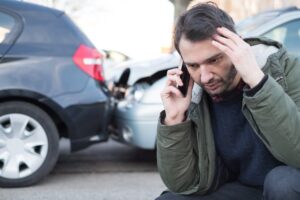
Rear end collisions do not always result from the actions of leading or following drivers. While every driver is responsible for their own behavior on the road, other parties sometimes contribute to conditions that increase crash risk.
Other parties that could be responsible for a rear end accident include:
- Other Motorists: A third driver could indirectly cause a rear end accident if, for instance, their erratic driving leads another motorist to react and stop abruptly, resulting in a rear end crash. In this scenario, you can hold the third motorist responsible for instigating the chain of events that led to the collision.
- Cyclists or Pedestrians: Cyclists or pedestrians who act unpredictably or unlawfully, such as by darting into traffic or failing to follow signals, can force drivers to brake suddenly. If a cyclist’s or pedestrian’s actions lead to a rear end collision, they could bear partial responsibility.
- Manufacturers: You can hold vehicle manufacturers at fault for a rear end crash if a design defect or mechanical failure in a rear vehicle prevents it from stopping in time. Faulty brakes are common culprits in rear end accidents, as even safe drivers can crash if they lose vehicle control.
- Road Designers: Architects and infrastructure engineers are responsible for designing safe, clear, and navigable roads. If poor road design, such as confusing signage or improper lane merging guidelines, contributes to a rear end accident, you can hold the designers or their employers liable.
- Local Road Authorities: These entities oversee road maintenance and timely updates on traffic conditions. You can hold them liable if their negligence in maintaining road quality, like failing to fill potholes or clear debris, leads to a rear end accident.
Useful Evidence in Rear End Accident Cases
When insurance adjusters, lawyers, and other parties investigate car accidents, their goal is to locate sufficient evidence to determine what happened and who was at fault. Depending on the circumstances, your rear end accident lawyer might use one or several of the following types of evidence to prove your case:
Photographs
Photographs capture the unspoken details of a rear end accident scene with stark clarity. Lawyers use these images to document the positions of vehicles post-collision, the extent of the damage, skidmarks on the road, traffic signals, weather conditions, and any road obstructions or defects. They provide visual context that can sway the court’s opinion of how and why a collision occurred.
Traffic Camera Footage
Modern traffic cameras capture many road incidents. Lawyers can use video footage from these cameras to establish the sequence of events leading to a collision and illustrate who was at fault. They can show the behavior of each driver before the impact, such as erratic driving, sudden stopping, or failing to signal, providing clear facts regarding the circumstances of the accident.
Vehicle Damage Reports
The pattern and extent of damage on the vehicles that collided can reveal much about the dynamics of a rear end crash. Lawyers can often leverage vehicle damage reports to infer speeds, angles of impact, and the force of the collision.
These reports can indicate whether a car was stationary or in motion at the time of the crash, making it easier to ascertain which party was at fault.
Eyewitness Testimony
People who witnessed the accident can provide useful details that neither driver recalls or thinks to mention. Lawyers frequently call upon eyewitnesses to recount their versions of events, which can corroborate or refute the accounts of the drivers. This testimony is often instrumental in piecing together the moments before and during the rear end accident.
Police Reports
After a rear end collision, law enforcement officers who respond to the scene typically compile reports that document what happened. These reports include police observations, statements from the drivers and witnesses, and sometimes officers’ opinions about who was at fault.
Lawyers often use these police reports to glean insights into the accident and to support their clients’ claims.
Cell Phone Records
In cases where distracted driving is a possible factor, lawyers often request cell phone records to determine whether a driver was texting or calling someone at the time of the accident. This evidence can indicate that a driver’s lack of attention contributed to the collision and bolster claims regarding who was at fault.
Toxicology Test Results
Toxicology tests measure the presence and concentration of alcohol, drugs, or other intoxicating substances in a person’s system. Lawyers present these results to demonstrate whether a driver was under the influence at the time of the rear end collision.
A positive result could be a damning piece of evidence, often irrefutably establishing a driver’s liability for the accident.
Dash Cam Footage
Dash cameras have become increasingly common and can provide indisputable evidence of the events leading up to a collision. Lawyers can use dash cam footage to show the court exactly what happened, potentially capturing negligent behavior like tailgating or abrupt lane changes that could prove liability.
Expert Testimony
Expert witnesses bring a layer of analytical depth to a rear end accident case. These professionals, with expertise in fields like medicine, accident reconstruction, or automotive engineering, offer informed opinions based on the available evidence.
Lawyers rely on expert testimony to translate complex data into understandable insights that can establish fault and the extent of damages.
How Much Can I Get for a Rear End Accident Claim?
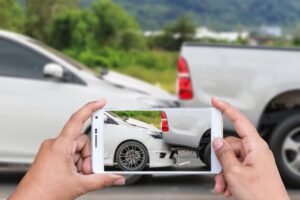
If you suffer harm in a rear end accident, you could file a claim against the other driver’s insurance policy to recover monetary compensation.
Depending on the circumstances of your rear end accident claim, you could demand compensation for:
- Past and future medical expenses resulting from the accident
- Incidental, out-of-pocket costs, like medical travel expenses
- Income losses from any time you miss at work while you recover
- Projected losses in lifetime earning capacity resulting from the crash
- Subjective losses like pain, suffering, and reduced quality of life
The amount of money you can get for each of these categories varies considerably depending on your unique situation.
These factors will influence how much you recover for your losses in a rear end accident claim:
- The severity of any injuries you sustained
- The total medical expenses you incurred
- Your long-term medical care requirements
- The need for rehabilitation or therapy
- Any loss of income due to your injuries
- Any future losses of earning capacity
- The extent of any damage to your vehicle
- How long it takes you to recover
- Your age and overall health before the accident
- How the accident affects your quality of life
- The degree of pain and suffering you endured
- Whether you experience psychological trauma, such as PTSD
- How your injuries affect your relationship with your spouse
- Whether you have pre-existing medical conditions
- The clarity of liability in the accident
- The insurance coverage of the at-fault driver
- The credibility of the available evidence
- Whether any witnesses saw the collision
- Aggravating circumstances, such as DUI
Do I Need a Lawyer for a Rear End Accident Case?

Yes. Even if you’re pretty sure the other driver is at fault, you should still hire a personal injury lawyer to represent you.
- Investigating the accident to identify liable parties and useful evidence
- Exploring all possible sources of compensation to maximize your payout
- Reviewing and analyzing police and accident reports
- Consulting medical professionals to assess the full extent of your injuries
- Gathering and organizing medical records and bills related to your injury
- Calculating the total costs of your medical treatment and rehabilitation
- Demonstrating how much your injuries affect your ability to work
- Interviewing witnesses who were present at the scene of the accident
- Arranging expert testimony to support your claim
- Advising you on the legal options and strategies available for your case
- Filing all necessary paperwork for insurance claims and court proceedings
- Handling communications with all other parties relevant to your case
- Negotiating with insurance companies on your behalf
- Advocating for you during settlement negotiations to reach a fair agreement
- Preparing for trial if a satisfactory settlement is not possible
- Drafting and filing a personal injury lawsuit if necessary
- Representing you in all legal proceedings and hearings
Free Consultation
We Are Here For You 24/7
Reviews
– Elissa M.
“Really pleased with Boohoff Law! Received immediate responses when I had any questions. Treated amazingly by all staff … made this process a true breeze!”
– Caitlyn M.
– Brandy K.
Related Posts
What is a No-Fault Car Accident Claim?
What Is the Wrongful Death Statute of Limitations?
What Happens When a Car Accident Exceeds Insurance Limits?
Recovery is personal.
You're better off with Boohoff.
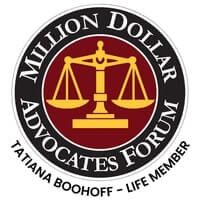

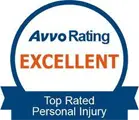
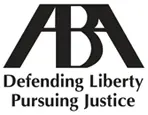
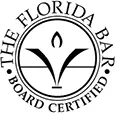
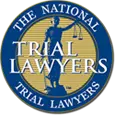

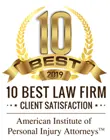


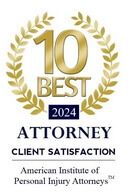
The information on this website is for general information purposes only. Nothing on this site should be taken as legal advice for any individual case or situation. This information is not intended to create, and receipt or viewing does not constitute, an attorney-client relationship.
available 24/7
(877) 999-9999
